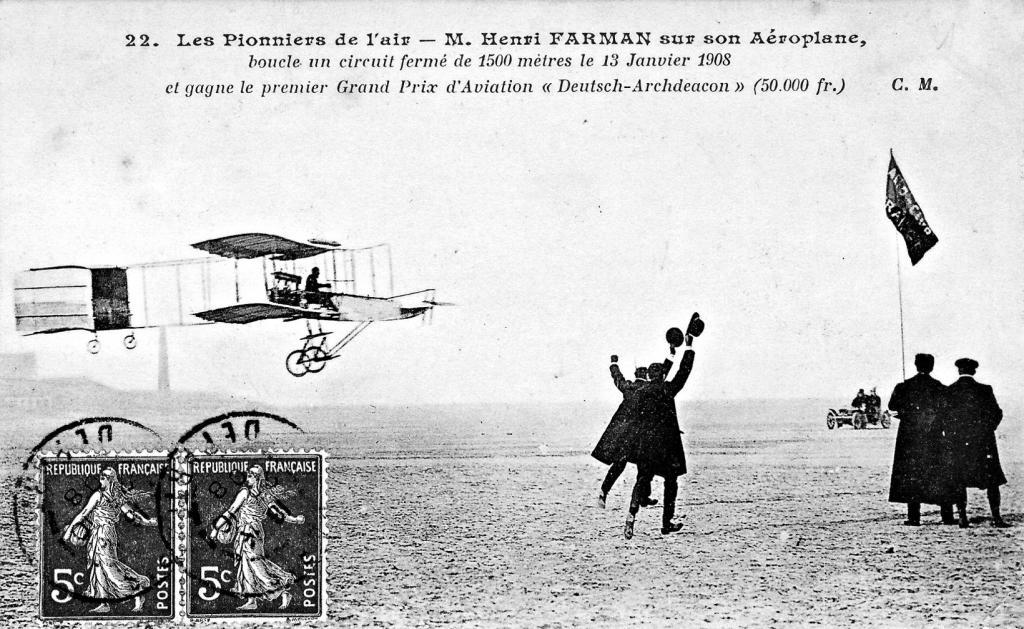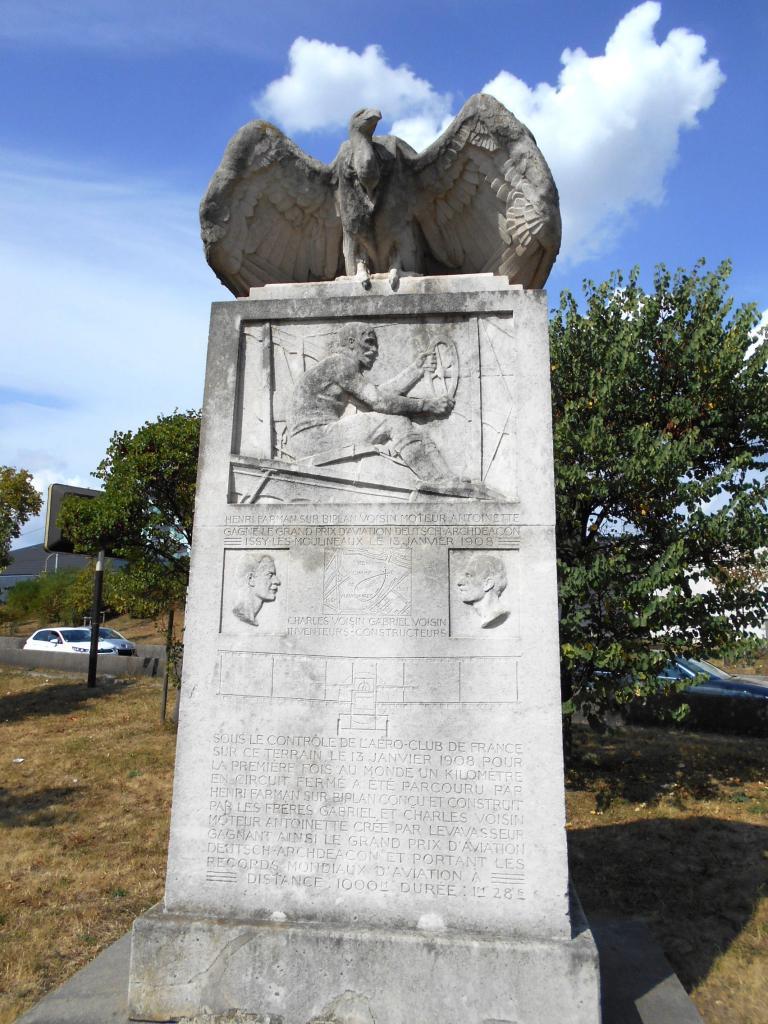De cette manière, il est le premier au monde officiellement à le faire car les frères Wright n’ont pas convié de commissaires pour valider leurs circuits revendiqués de 1904. Il y avait beaucoup de concurrents pour couvrir le premier kilomètre en boucle mais Henri Farman l’a fait à temps sur le terrain d’Issy-les-Moulineaux grâce à un aéroplane modifié des frères Voisin et un moteur Antoinette de Léon Levavasseur. A l’occasion de cet anniversaire, je vous offre quelques pages sur l’exploit de Henri Farman tirées du livre « Une autre histoire de l’aviation ». Cliquez sur ce lien ou sur l’image ci-dessous pour lire cet évènement historique:

Superbe film qui permet de découvrir Henri Farman et en particulier son exploit du 13 janvier 1908 après 3’10 »:
On peut toujours voir la stèle qui commémore cet exploit mondial à Paris. Il suffit de sortir de la station de métro de Balard et c’est juste après le tunnel du périphérique sur la droite. C’est juste à côté de la station de Tramway Suzanne Lenglen. Il reste encore un héliport devant les locaux de la DGAC et la boucle du parcours de santé entre l’Aquaboulevard et l’héliport correspond à peu de choses près à la boucle de Farman sauf qu’il est probablement parti depuis un lieu un peu plus au nord-est du tunnel sous le périphérique. C’est là que les frères Voisin construirent leurs succès. Deux ans plus tard, Henri Coanda fera une première tentative de vol avec un moteur à réaction depuis ce même terrain qui faisait partie d’Issy-les-Moulineaux alors que c’est aujourd’hui un quartier de Paris.
Quelques photos du monument prises en août 2018:




Le livre « Une autre histoire de l’aviation » est disponible ici: https://fclanglais.fr/livre/
Voici le plan pour vous rendre au monument: https://goo.gl/maps/8pS6LGNSVj92
Enfin, je vous souhaite une très bonne année 2019, et à bientôt.
